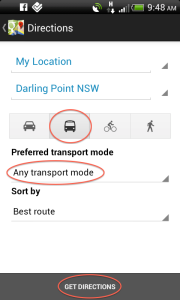
N95
Since Nokia were bought/sold themselves to Microsoft this week, there has been a flurry of articles around the theme of “Where they went wrong”, none of which lined up with my own memory of one of the significant turning points in the development of smartphones.
In 2007 to 2009 I headed up the Devices teams at 3 Mobile Australia, and (due to a merger), Vodafone Australia at the same time. (Ultimately these two teams, working for two competing brands were merged into one, but that’s another story entirely). Suffice to say that during this period myself and my team worked closely with Nokia and all the other handset manufacturers.
The Devices teams were groups of buyers and account managers who were responsible for buying phones from LG, Samsung, HTC, Blackberry, Sony/Ericsson and, most importantly at the time, Nokia. The team would look at the roadmap of phones from each of the manufacturers, choose the ones that were thought to suit our market the best, and negotiate the best purchase price from the supplier. The sheer number of phones we bought was huge, and of course, with that volume purchase came the inevitable price negotiation, and a sweetener of jointly employed marketing dollars from the manufacturer.
Nokia were, at the time, the biggest supplier by far, offering good prices on reliable phones which were carefully designed to fit their exhaustive customer profiling methodology. They didn’t always get this design/targeting absolutely right, but it never mattered much. For example, the E71 with it’s QWERTY keyboard and early smartphone features was meant to compete with Blackberry in the enterprise space, but ended up being a massive hit with younger consumers who liked the keyboard, high quality finish and apps like IM and Email.
Nokia had a very well thought through future view, which predicted a massive rise in (Nokia) smartphone take up, and a resulting huge increase in demand for data and data services. Quite what these services would be was a little unclear – Nokia and the operators knew it would be a combination of email, internet browsing, messaging and maybe video and audio streaming – and there were some nascent ideas that social was important too – in an era before Facebook and YouTube were really mainstream.
Nokia had other great operational attributes. They were great at working their partnerships with the operators, could deliver on time, offered great price breaks as products went through their lifecycle, and were quite grown up by dynamic, only occasionally allowing their Scandinavian reservation to show through.
By comparison, the 3/Vodafone devices team knew the characteristics of the various other suppliers, as they were in 2007, all too well :
- Samsung : Shotgun approach, 100’s of phones designed with little or no view on consumer interests or segments. Plenty of marketing dollars to spend.
- LG : Similar to Samsung but logistics can’t be relied on and no marketing dollars.
- Blackberry : Inflexible and expensive. Only have one new device per year. Old fashioned UI. Uninterested in 3G.
- HTC : Windows phones, so the only one with true Microsoft Exchange email. Polarising phone designs. Sometimes they’re good designs, but mainly for business in low volumes.
- Sony/Ericsson : Small product range but very amenable to understanding the operators customers. Designs were often quirky, but reliable sellers. No price breaks on older devices and some marketing dollars.
Apple, being the new arrival, were not interested in positioning themselves alongside the others. There was no roadmap of products, no particular interest to work with us as a channel to market, no shared marketing dollars, and worst of all, no negotiating on price or volumes. You got what you got, when Apple decided.
There is not really any need to state though, that iPhone was a fantastic product, which we knew customers would buy in droves, and for all the difficulties that we found in bending to Apple’s absolute direction on pretty much every aspect of working with them, we did it anyway, bearing the full cost of the phone purchase, but selling an awful lot of iPhones.
Nokia, meanwhile, quite arrogantly defended their first-to-market smartphone position (N73, N95, N96 anybody …) and chose to hark back to their now ageing credentials as the “best” User Interface which was by then relegated to Series 40 “candy-bar” phones. Nokia’s clunky and fragmented Operating Systems were not interesting to new developers (who mostly understood Java and not C++ for Symbian). The developer eco-system was hard work, and the operators resisted letting Nokia get in the way of the operators perceived relationship with the developer and the end-user.
In addition, the new inroads into touch screens were being ignored. HTC had a background in these, while Samsung were experimenting with mixed success. More interesting to everyone was BlackBerry’s success with QWERTY and understanding how to compete with that. Sony/Ericsson engineers at the time questioned me “Don’t you think touchscreen’s are just a fad ?” (No, I didn’t), and Nokia were just as dismissive.
All of this combined to create the perfect opportunity for disruption. Nokia as the incumbent with the large operational business and existing, old, relationships was blind-sided by Apple, the new entrant who refused to play by (or was completely disinterested in) the existing rules of the game that Nokia and the operators played to. And they had a superior product.
I hope Nokia do well in their new home at Microsoft, as they do still produce a mass of great feature phones, and their recent Lumia’s have mostly been really good. Windows Phone operating system is very, very good and is equal to, or better to use than iOS or Android in my opinion, and it’s finally starting to make some traction in the marketplace.
Let’s hope Microsoft can get this right.










